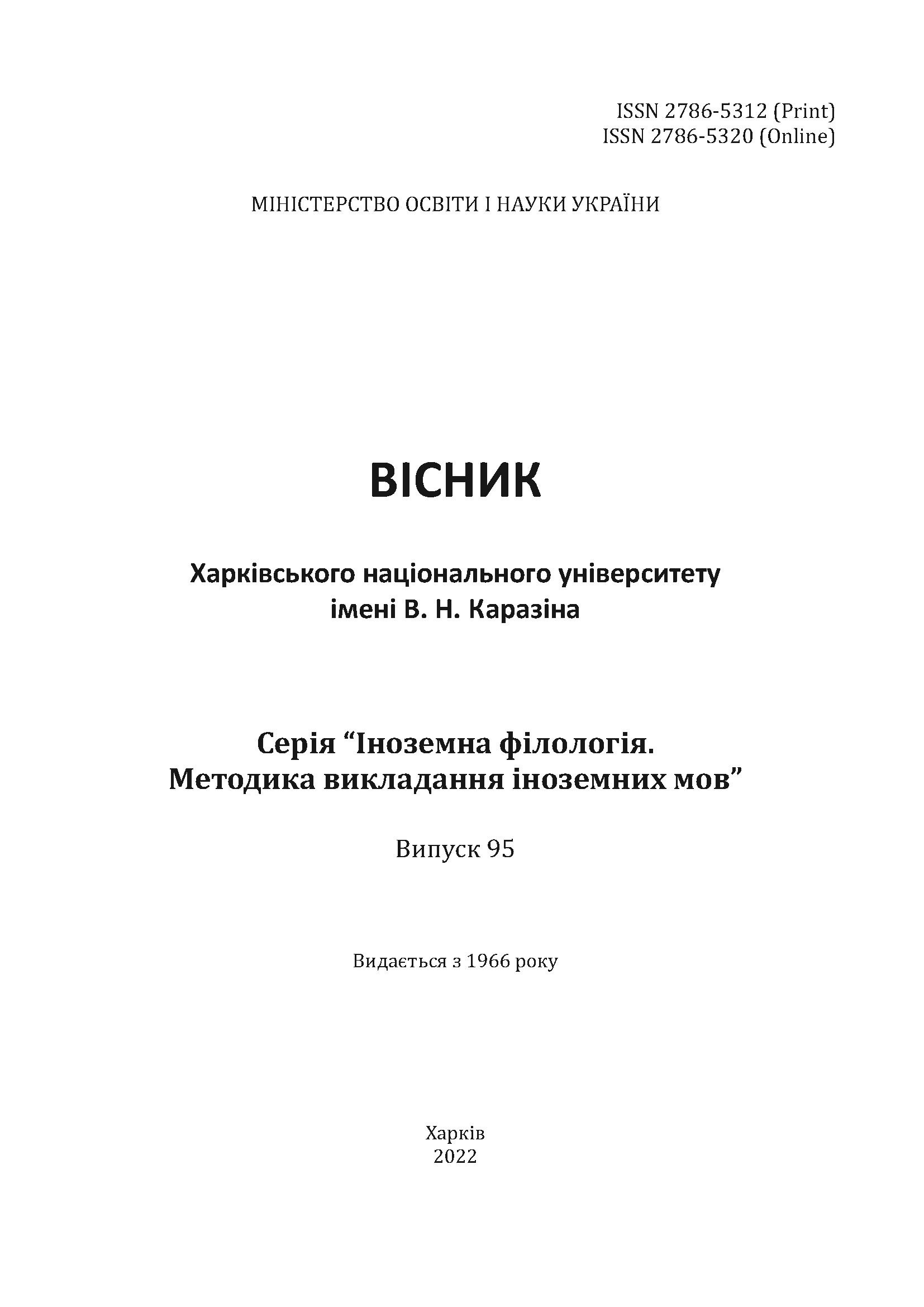Відображення жіночих відносин у китайськомовному побутовому дискурсі: прагмастилістичний аспект
Анотація
У статті проаналізовано особливості відображення жіночих відносин у китайськомовному побутовому дискурсі на матеріалі оповідань та новел ХХ-ХХІ ст. Проаналізовано поняття «контакт» та «дискурс», уточнено межі функціонування побутового дискурсу, розкрито характерні риси жіночого контакту у побутовому дискурсі, проаналізовано стратегії і тактики жіночого побутового дискурсу. Найменш структурованим типом дискурсу вважають дискурс побутового мовного спілкування. Основною ознакою побутового дискурсу є його комунікативна спрямованість і наближеність до повсякденної мови, вживання сленгу. Сімейна комунікація, в якій занурена кожна людина, утворює так звану «сімейну мову», що формує певну мовну поведінку людини, її особливості мовлення, інтонацію та емоційну забарвленість мовлення. В конструюванні жіночого образу китайські автори часто звертаються до метафоризації, порівнянь, контекстуальних перифразів, метонімії та паремій (чен'юй, яньюй, суюй, гуаньюн'юй), серед яких превалює зображення зовнішньої привабливості жінки у порівнянні її з місяцем, квіткою, нефритом, богинею, нечистою силою. Зображуючи жіночий дискурс, автори звертаються до засобів градації (клімакс та антиклімакс), анафори, використовують усі види окликів, звертань, часток, вдаються до експресивних можливостей кореневих морфем. Дослідивши тактики та стратегії, що використовують жінки під час побутового спілкування, ми виявили, що панівними стратегіями є утвердження, переконання, доведення та аргументація. Під час розгортання конфліктної комунікації особливої уваги жінки надають стратегіям пристосування, уникнення, співпраці та суперництва. Виявлено, що жіноча мова відрізняється від чоловічої своєю більшою експресивністю, широким використанням вигуків, часток для збільшення емоційної забарвленості, великою концентрацією емоційно-оцінної лексики. Продовженням досліджень вважаємо вивчення композиції жіночого побутового дискурсу, його синергії, яка базується на взаємодії цілей дискурсу та його конституціональних обмежень.
Завантаження
Посилання
Birkenbill, F. (1997). Jazyk intonacii, mimiki, zhestov [The language of intonations, mimics and gestures]. Sankt-Peterburg. (in Russian)
Brandt, G. A. (2003). Contemporary feminism: A revolution in the historic-philosophic tradition of East-European anthropology. Moscow.
Ivanova, E. V. (2007). K probleme issledovanija jekologicheskogo diskursa [To the problem of studying ecological discourse]. (in Russian)
Karasik, V. I. (2002). Jazykovoj krug: lichnost‘, koncepty, diskurs [The language circle: personality, concepts, discourse]. (in Russian)
Makarov, M. L. (2003). Osnovy teorii diskursa [The basics of discourse theory]. (in Russian)
Pihtovnikova, L. S. (2012). Lingvosinergetika: Osnovy i ocherk napravlenij [Linguosinergetics: Basics and outline of directions]. HNU imeni V. N. Karazina. (in Russian)
Pihtovnikova, L. S. (2017). Sinergetika kompozicii rechevogo proizvedenija [Sinergia of the composition of a written work]. Vіsnik Harkіvs’kogo nacіonal’nogo unіversitetu іmenі V. N. Karazіna. Serіja «Іnozemna fіlologіja. Metodika vikladannja іnozemnih mov» [V. N. Karazin Journal. “Foreign Philology Series. Methodology of teaching foreign languages”], 86, 103–109. (in Russian)
Pihtovnikova, L. S., & Motrohov, A. I. (2017). Kompozicija i stil’ rasskaza Juj Da-fu 春风沉醉的晚上 («Vesennie nochi»). Nova fіlologіja [New Philology], 70, 145–149. (in Russian)
Pihtovnikova, L. S., & Motrohov, A. I. (2019). Kompozicija i stil’ fantasticheskogo rasskaza Sja Czja 百鬼夜行街 («Ulica prizrakov») [The composition and style of the fiction story Sja Czja 百鬼夜行街 ]. Vіsnik Harkіvs’kogo nacіonal’nogo unіversitetu іmenі V. N. Karazіna. Serіja «Іnozemna fіlologіja. Metodika vikladannja іnozemnih mov» [V. N. Karazin Journal. “Foreign Philology Series. Methodology of teaching foreign languages”], 89, 24–29. (in Russian)
Pihtovnikova, L. S., & Mukatayeva, Ya. V. (2017). Prahmastylistychni kharakterystyky nimetskomovnoi prytchi [Pragma-linguistic characteristics of German parables]. Kharkiv: KhNU imeni V. N. Karazina. (in Ukrainian)
Rusakova, O. F. (2006). Sovremennye teorii diskursa: Mul’tidisciplinarnyj analis [Modern discourse theories: Interdisciplinary analysis]. Ekaterinburg. (in Russian)
Shevchenko, I. S. (2012). Diskurs i stil’: Problemy jevristiki [Discourse and style]. Funkcional’naja lingvistika [Functional Linguistics], 1(13), 313–315. (in Russian)
Warnke, G. Feminism, the Frankfurt School, and Nancy Fraser. Retrieved from https://gefter.ru/archive/9888.
冯骥才。高女人和她的矮丈夫. Retrieved from https://inlnk.ru/JjMve.
墨香铜臭。 魔道祖师. Retrieved from https://www.mengruan.com/modaozushi/.
巴金。 激流三部曲。家. Retrieved from https://inlnk.ru/NDMAD.
张洁。 祖母绿. Retrieved from https://www.99csw.com/book/10235/368955.htm.
邝丽莎。 雪花和秘密的扇子. Retrieved from https://www.sto.cx/book-26506-1.html.
邝丽莎。上海女孩. 京华出版社(2010).页.




